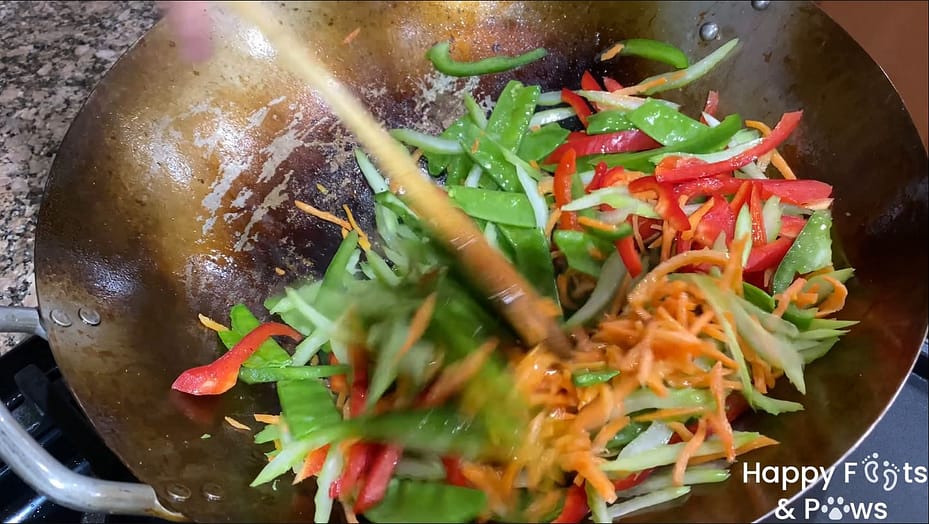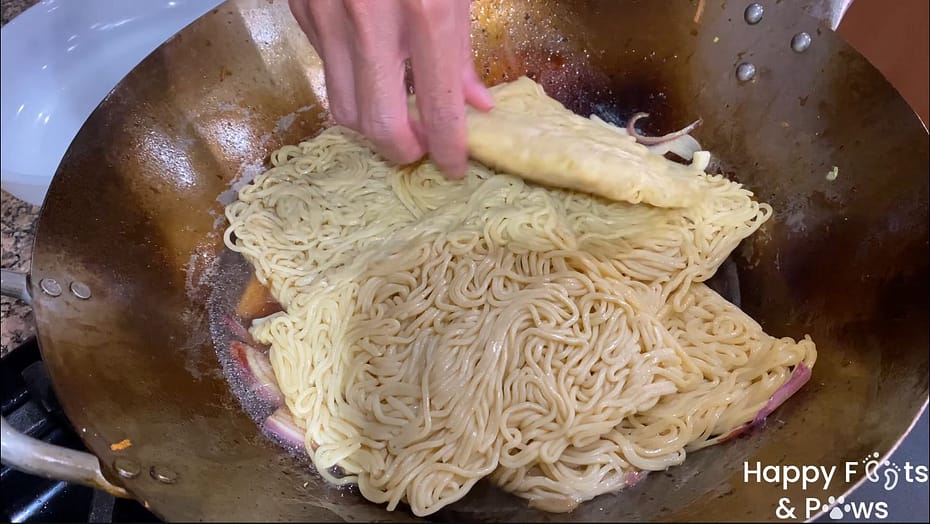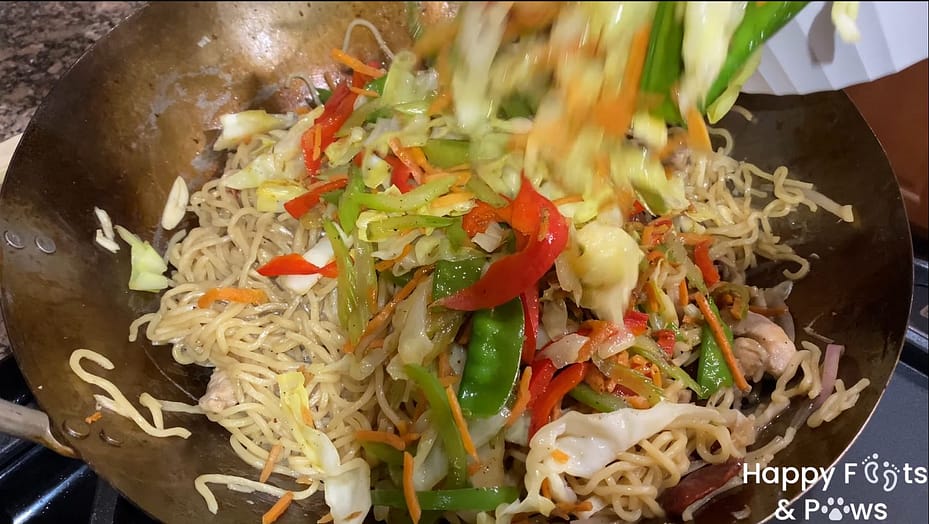As a Filipino, I’ve always been drawn to the rich culinary heritage of my culture. Pancit Canton is a prime example of the delightful fusion of Chinese and Filipino flavors. Centuries ago, noodles were introduced to the Philippines by the Chinese, and the word “pancit” or “pansit” is derived from the Philippine Hokkien dialect, meaning “wonton.” Over time, this dish has evolved, with various types of noodles and cooking techniques being incorporated, resulting in the Pancit Canton we know and love today.
Table of Contents
Typical Pancit Ingredients
As a Filipino, I’ve always been drawn to the rich culinary heritage of my culture. Pancit Canton is a prime example of the delightful fusion of Chinese and Filipino flavors. Centuries ago, noodles were introduced to the Philippines by the Chinese, and the word “pancit” or “pansit” is derived from the Philippine Hokkien dialect, meaning “wonton.” Over time, this dish has evolved, with various types of noodles and cooking techniques being incorporated, resulting in the Pancit Canton we know and love today.
Pancit Changes By Region
Northern Luzon
In the northern part of Luzon island, particularly in the Ilocos region, Pancit Canton is often stir-fried with local ingredients such as bagnet (crispy pork belly), longganisa (Filipino sausage), and bitter melon. It tends to be less saucy and more on the dry side compared to other versions.
Central Luzon
In provinces like Pampanga and Bulacan, Pancit Canton is known for its rich and flavorful sauce, often made with a combination of soy sauce, oyster sauce, and sometimes shrimp paste (bagoong). It may also include a mix of seafood like shrimp, squid, and fish balls.
Southern Luzon and Visayas
In regions like Batangas and Cebu, Pancit Canton is typically prepared with a spicy twist. It may include ingredients like chili peppers or even coconut milk, giving it a unique flavor profile compared to other versions.
Mindanao
In the southern part of the Philippines, Pancit Canton may be influenced by Muslim and indigenous cuisines. It might feature ingredients like turmeric, coconut milk, and a wider array of spices, reflecting the diverse cultural heritage of the region.
Mastering the Art of Pancit Canton
In this recipe, I’ll be focusing on the saute and stir-fry method of preparing Pancit Canton. The key to this dish is the careful preparation and cooking of the individual components – the protein, vegetables, and noodles – before gently tossing them together to create a harmonious blend of flavors and textures.
Instructional Video
Ingredients
Fried Shrimp
- 6 large shrimp (shells on, heads removed)
- Pinch of salt
- 1 tbsp cornstarch (or corn flour)
- 1-2 tbsp olive oil (use any oil available to you)
Stir-Fried Protein
- 3 lap xuong or Chinese sausages, thinly sliced
- ½ lb chicken, cut into bite-sized pieces (I used tenders and thighs)
- 1-2 pinch salt
Stir-Fried Vegetables
- 4 oz matchsticks carrots (or regular carrots cut into matchsticks)
- 6 stalks celery, thinly sliced
- 4 oz snow peas, ends trimmed
- ½ large green bell pepper, thinly sliced
- ½ large red bell pepper, thinly sliced
- 1 tsp ground black pepper
- ½ tsp salt
- 8 oz cabbage, sliced
Sauce Mixture
- 1 tbsp olive oil
- 1 large shallot, sliced
- 4 garlic cloves, crushed and sliced
- 2 cups chicken stock (I used low sodium. Use water if preferred)
- ¼ cup toyo or soy sauce (I used light soy sauce)
- 35 oz wheat flour or yakisoba noodles (use egg noodles if prefer)
- Salt and pepper (adjust to taste)
Garnish
- 4 stalks spring onions, cut thinly
Items You’ll Need
- Large wok or pot
- Wooden spoons
- Mixing bowls
- Measuring cups, spoons, bowls
- Knife
- Plates
- Cutting board
- Forks
Instructions
Cook the Protein

We’ll start by preparing the protein – fried shrimp, Chinese sausage, and chicken. The shrimp are coated in a light cornstarch batter and fried until golden, adding a delightful crunch to the dish. The Chinese sausage, or lap xuong, is thinly sliced and stir-fried until the fat renders and the sausage is cooked through. Finally, the chicken is cut into bite-sized pieces, seasoned with salt and pepper, and stir-fried until lightly browned.
Stir-Fry the Vegetables

Next, we’ll focus on the vibrant vegetables that add freshness and crunch to the Pancit Canton. We’ll be using a variety of vegetables, including matchstick carrots, celery, snow peas, green and red bell peppers, and cabbage. These are stir-fried in batches, seasoned with salt, pepper, and a touch of oil, to ensure they retain their texture and flavor.
Cook The Noodles

For the noodles, I’ve opted for wheat flour or yakisoba noodles, as they have a subtle texture and are not overly salty. The noodles are cooked in a flavorful broth made with chicken stock (or water), soy sauce, and aromatics like shallot and garlic.
Bring It All Together

The final step is to combine all the components – the cooked protein, vegetables, and noodles – and gently toss them together over low heat until everything is heated through and the flavors have melded. A sprinkle of fresh spring onions adds a final touch of brightness and freshness to the dish.
